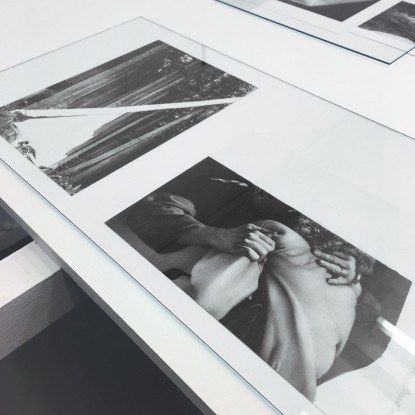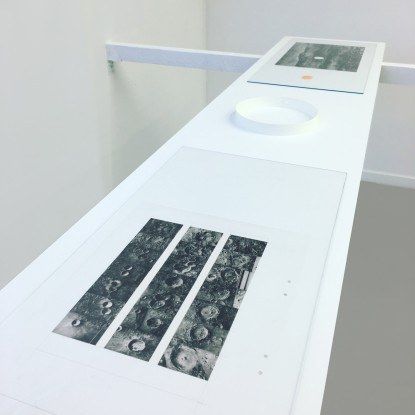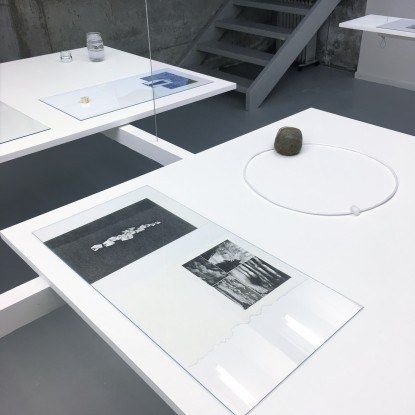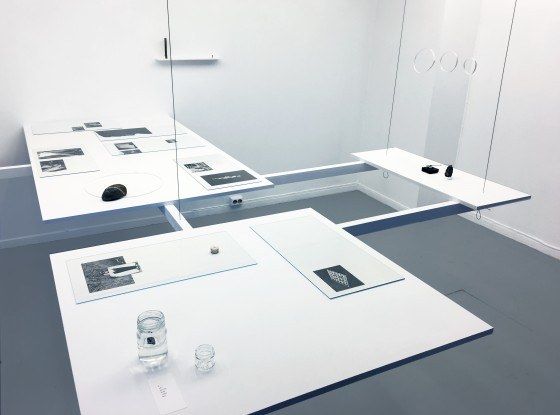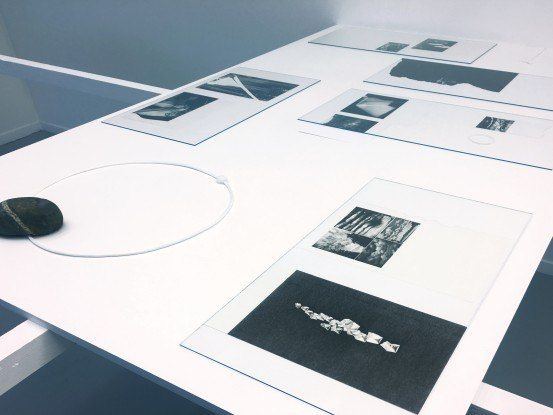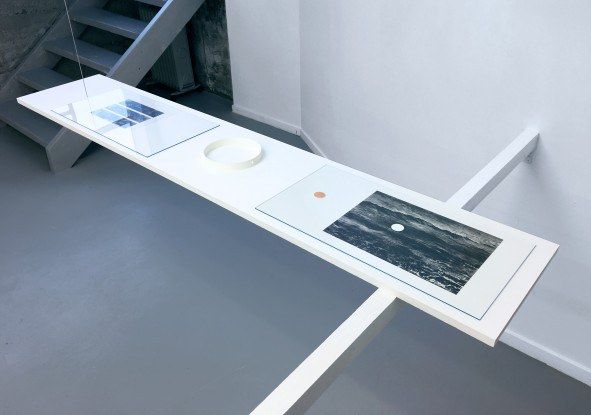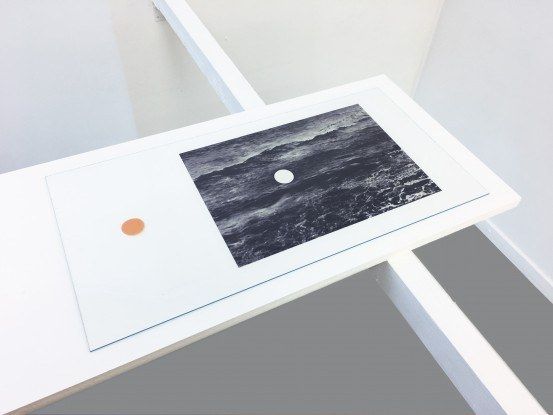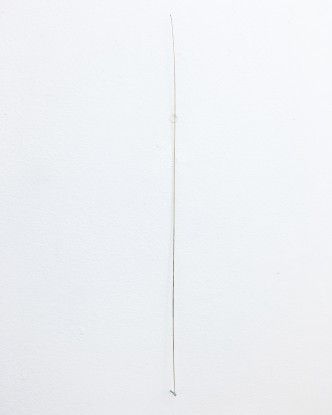HOLD: noun – a large space in the lower part of a ship or aircraft in which cargo is stowed.
An entirely different definition occurs to me – a hold as in a space that is able to contain, encompass, encircle. A hold (noun) is also a thing that holds (verb). With this in mind, my eyes notice for the first time the numerous circles and enclosures in the exhibition – echoes of this shape reverberate around the room. A deliberate circle of negative space in a drawing of the ocean, a peach-colored circle next to the drawing as if it could plug the hole, an uneven circle of string, stone, and cotton, texts typed and displayed in rings and arranged in circles on a sheet of paper, often imperfect, deliberately off center or crooked. There are also small sculptures and arrangements of objects punctuating the exhibition that I had previously overlooked while so intently studying the drawings – wads of cotton, string, pencil nubs, small pieces of wood, stones and glass containers holding water and typed words.
This definition helps solidify the exhibition for me: A sparse exhibition that contains so much. During my conversation with the artist, we discussed the fragility of life, the serenity of the environment and fears for its demise, unraveling personal relationships and new loves, the fine line between life and death, existing and ceasing to be, and of course the investigation into language itself through repetition, wordplay and arrangement. After speaking for over an hour, Hultman said “So it’s about all of that – about life.” And as trite as that may sound, in this instance it holds true. HOLD is one of those rare exhibitions that is about everything, while still being specific enough to avoid vagueness. The broad, universal concepts contained in the exhibition come together and hang on a single word.
The various definitions of HOLD are numerous, and I could go on and on: That argument doesn’t hold water. To hold merit. To have and to hold. To hold your liquor. When viewed through the veiled layers of language, the associations possible within Hultman’s exhibition seems endless. But one final definition strikes me as I leave the exhibition, perhaps the most important: to hold on.


